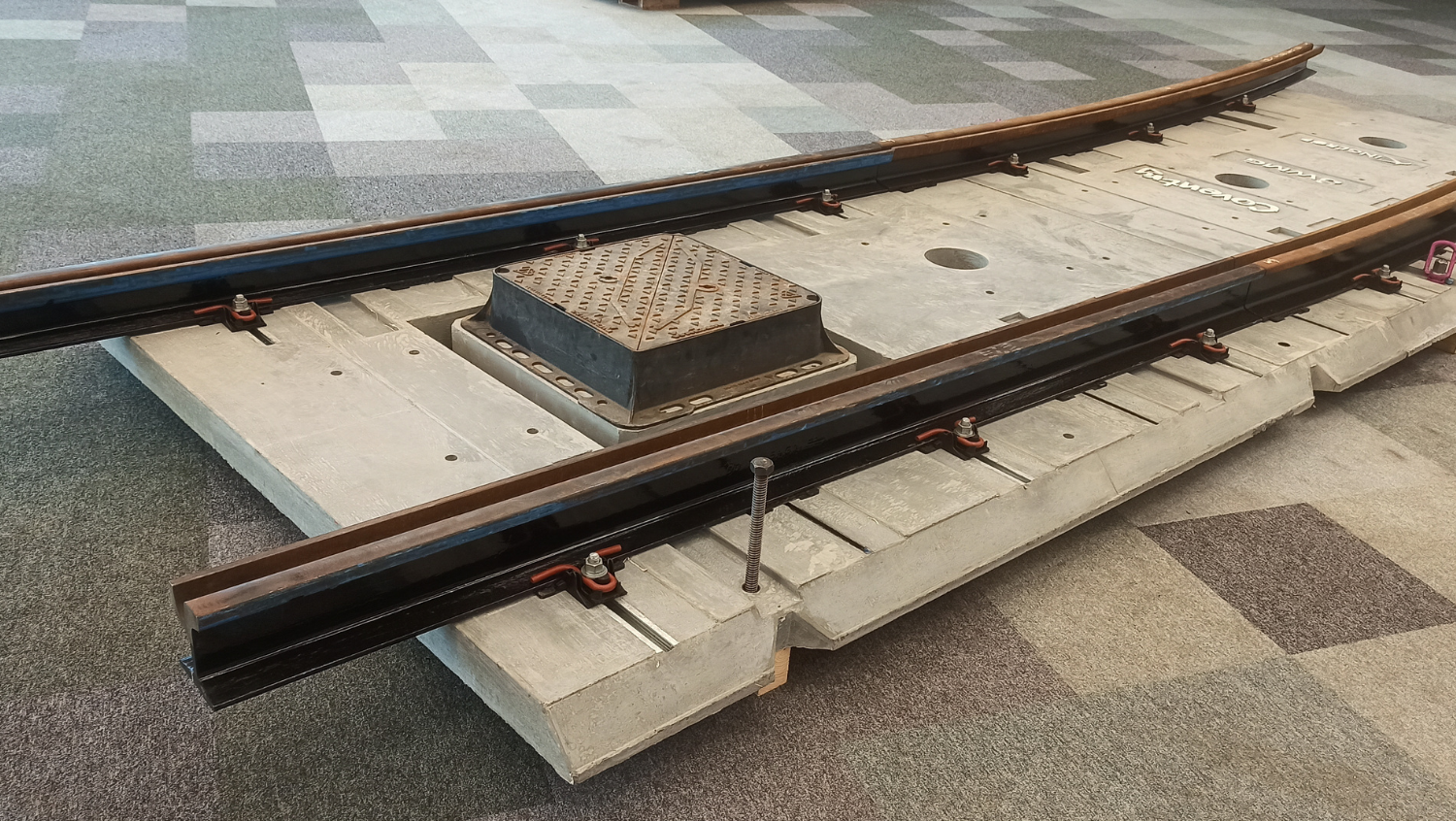It has been extremely rewarding working with CFS to help us develop a track system which will be game-changing for the light rail sector. The CFS cast-in channels with matched fixings, have allowed us to develop a low-profile track concept drawing on state-of-the-art construction materials. The solution allows rapid installation with a step-change in affordability and I look forward to working further with CFS on the track system exploitation.
Coventry Very Light Rail Project

The Coventry Very Light Rail project aims to develop a mass transport solution, providing a viable alternative to the car, helping to improve air quality, reduce CO2 emissions and reduce congestion. The project was launched by Coventry City Council, who worked alongside WMG at The University of Warwick to create a game-changing public transport solution.
The vehicle is battery-powered, eliminating the need for overhead wires. It has an innovative turning system allowing it to handle 15m radius curves, meaning it can be installed in tight corners in the existing highway, and the Council intends to operate it at a high frequency to provide a turn-up and go service. The vehicle has a capacity of 56, is comfortable, and has low floors to enable passengers to embark and disembark easily. It has been developed to allow autonomous operation in the future.
The low-profile track makes use of advanced materials to optimise its performance characteristics, whilst also employing standard rail parts where possible to ensure ease of manufacturing and use of existing supply chains.
Products Used
Challenge
Although light rail systems offer benefits for cities in terms of transportation and air quality, the costs associated with system installation are often out of reach given funding constraints. Typical system costs may be in excess of £70 million per kilometre meaning that new networks are likely to run to billions of pounds. Early project research by the WMG-Coventry City Council team revealed that a significant proportion of these costs are related to the diversion of utilities. Convention light rail systems utilise deep foundations, leading to interaction with utilities and therefore resulting in diversions, delays and project management costs.
Coventry City Council set WMG the challenge of developing a low-profile light rail track system that requires a dig depth of no more than 30 cm. Together with an innovation partner Ingerop-Rendel, a high-performance shallow slab system was developed meeting the requirements for mechanical performance due to both the light rail vehicles and heavy good vehicles. To achieve secure fixing of the rails to the high-performance slabs, the fixing inserts need to provide flexibility and be able to withstand the applied forces. Another consideration is for the fixing bolts to provide reliable integrity for long-term exposure. They have to be secure yet allow for enough movement caused by the tram cars and the material expansion due to the weather exposure. They also need to be durable to long-term repetitive loading from rail and road vehicles.
Solution
As WMG was looking to bring their vision to life, they searched for a supplier that could provide channels that could meet the demanding mechanical performance required. As this is not a standard application, finding a supplier with both the technical knowledge and the products to support the project proved to be a challenge.
Also, as this is a significant civil engineering R&D project, WMG required for their suppliers to be flexible. WMG undertook all the prototype testing in-house using their advanced testing facilities.
Thanks to its technical department, CFS was able to work in partnership with WMG to specify the right design, focusing on a bespoke channel with a large profile and a shallow anchor. Being a supplier with vast technical expertise in cast-in channels, CFS was able to react promptly and support WMG with the design.
Results
The support from CFS helped WMG to deliver a functional design that has the potential to revolutionise city public transport infrastructure projects.
CFS and WMG continue working together to further optimise the design. We are currently looking at changing the coating of the bolts to modify friction but provide equivalent corrosion protection as galvanising. The benefit is that the reduced friction can provide more reliable bolt torque to be achieved.
Having worked together on this project WMG and CFS have started a partnership that focuses on new product development for the precast industry.